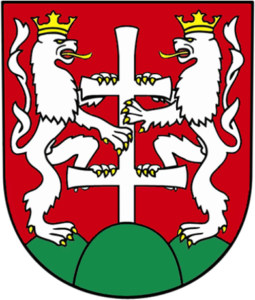Lőcse

Lőcse (Levoča, Leutschau) is the city where you can see one of the nicest churches of ancient Hungary, the St. Jakab Church. Lőcse was established in the 12th century but the present location was built a bit farther, only after the Mongols’ invasion, fortified by strong walls.

It is located in the Upper lands/Horná Zem/Felvidék, in Slovakia. The German Saxons began to arrive there when after the Mongols had gone, the surviving Saxons returned from the Menedékkő (Shelter-stone).

Lőcse was first mentioned in 1245 and it had been the main center of the Saxon settlements from 1271 until 1772. The city became the capital of the Association of Szepességi (Zipt) Germans, with a form of self-rule within the Kingdom of Hungary. You can read more about these German towns of North Hungary here: https://www.hungarianottomanwars.com/essays/szepesseg/

The walls were built in the 13th century but were rebuilt in the 15th and 16th centuries. These walls circle an area of 44 acres. The city got a commercial right in 1321 to stop merchants and two years later became a free royal town of Hungary. There were huge fires in 1332 and 1431. The Bohemian Hussites had attacked it many times between 1440-1450 and it was King Matthias’ headquarters when he set out against them. You can read about Matthias’ wars here:
https://www.hungarianottomanwars.com/essays/king-matthias-at-boroszlo-wroclaw-breslau/

Lőcse had a significant role in the wars between King Szapolyai and King Ferdinand during the Dual Kingship, after 1526. There had been a long violent feud between Lőcse and the neighboring Késmárk for a century. The town, located at an intersection of trade routes between Poland and Hungary, became a rich center of commerce. It exported iron, copper, furs, leather, corn, and wine.

At the same time, the town became an important cultural center. The Latinist Leonard Cox came here from English and taught around 1520 in a school in Lőcse. On the other hand, the bookseller Brewer from Wittenberg transformed his bookstore into a prolific printing plant, that lasted for 150 years. Also, one of the best-known medieval woodcarvers settled here.

The town kept this cultural and economic status until the end of the 16th century, despite two damaging fires: the first in 1550 destroyed nearly all of the Gothic architecture and another happened in 1599. During this period of prosperity, several churches were built and the town had a school, library, pharmacy, and physicians. The town was one of the centers of the Protestant Reformation in Northern Hungary.

The town started to decline during the anti-Habsburg uprisings in the 17th century. A famous printing house was established here in 1624 that had been in use until 1754. Other printing presses were there, too, and many famous people taught and learned in the city’s schools.

Dear Readers, I can only make this content available through small donations or by selling my books or T-shirts:
Please, feel free to support me with a coffee here:
You can check out my books on Amazon or Draft2Digital, they are available in hardcover, paperback, or ebook:
https://www.amazon.com/dp/198020490X or at https://books2read.com/b/boYd81

My work can also be followed and supported on Patreon: Become a Patron!http://Become a Patron!
[wpedon id=”9140″]

https://hungarianottomanwars.myspreadshop.com/all

Here are more pictures of Lőcse and its fortifications:

























































